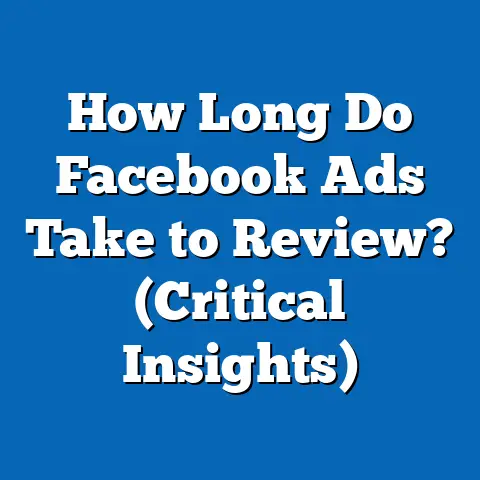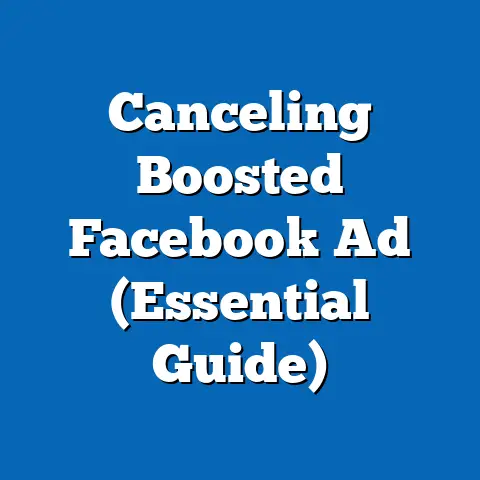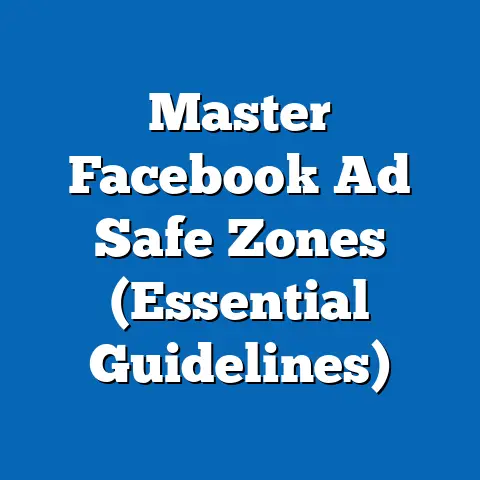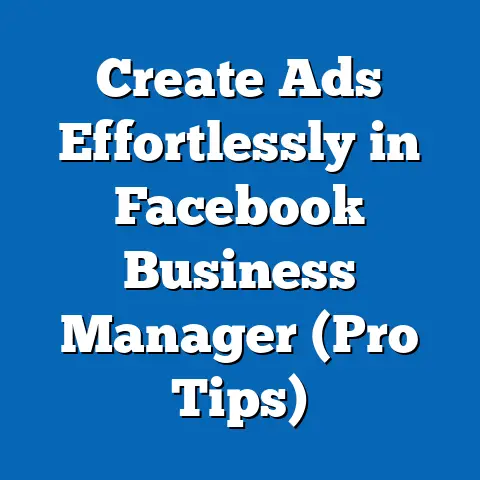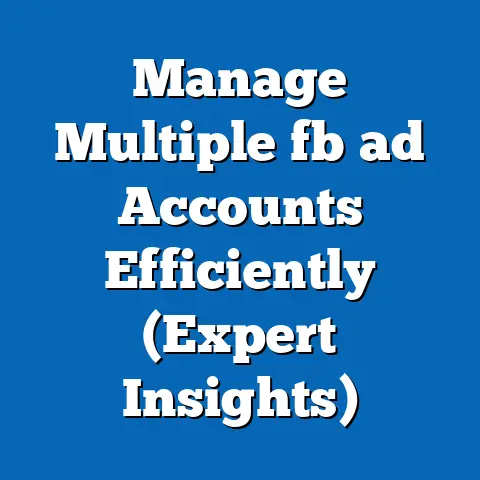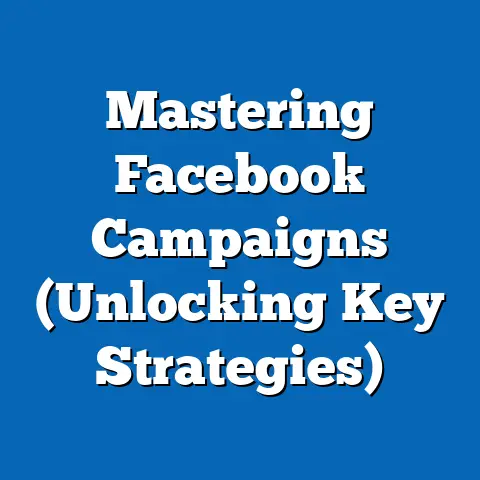Master iOS 14 Facebook Ads (Unlock Proven Strategies)
Let’s face it, the world is changing. We’re seeing a massive shift towards sustainability, with consumers actively seeking out brands that align with their values. I’ve noticed this firsthand, both in my personal life and in the marketing campaigns I’ve helped develop. More and more, people are prioritizing eco-friendly options, and businesses are starting to take notice. This isn’t just a trend; it’s a fundamental shift in consumer behavior.
But here’s the rub: as consumers become more conscious of their impact, they’re also becoming more protective of their privacy. This is where Apple’s iOS 14 update comes in, throwing a wrench into the traditional Facebook Ads playbook. I remember when the update first rolled out, the collective gasp from the marketing community was almost audible! Suddenly, the data we relied on to target and measure our campaigns was significantly limited.
Understanding iOS 14 Changes
Apple’s iOS 14 update, particularly the App Tracking Transparency (ATT) framework, sent shockwaves through the digital advertising world. As someone who’s been immersed in Facebook Ads for years, I can attest to the significant impact it had. Suddenly, the ability to track users across apps and websites, a cornerstone of targeted advertising, was drastically limited.
So, what exactly happened? ATT requires apps to explicitly ask users for permission to track their activity. This simple change flipped the script. Before, tracking was the default, and users had to actively opt-out. Now, users have to actively opt-in, and unsurprisingly, many are choosing not to. Studies show that the opt-in rates for app tracking are significantly lower than before, in some cases below 20%. This means less data for Facebook to use for ad targeting and measurement.
This has a ripple effect on several key areas:
- Data Tracking: With fewer users opting in, Facebook’s ability to collect data on user behavior across different apps and websites is diminished. This impacts the accuracy of audience segmentation and personalization.
- Ad Targeting: The reduction in data makes it harder to target specific demographics, interests, and behaviors. The precision targeting we once took for granted is no longer guaranteed.
- Measurement: Measuring the effectiveness of ad campaigns becomes more challenging. It’s harder to attribute conversions and sales directly to specific ads, making it difficult to calculate ROI accurately.
I’ve personally seen campaigns that previously performed exceptionally well suddenly struggle to deliver the same results. The decline in data availability meant that the sophisticated algorithms that powered Facebook’s ad targeting were operating with less information, leading to less effective ad delivery.
However, this isn’t a death knell for Facebook Ads. It’s a call for adaptation and a shift in strategy. The key is to focus on leveraging first-party data. This is data you collect directly from your customers through your website, email list, and other channels. Think of it as gold dust – highly valuable and directly relevant to your business.
Here’s how you can navigate these challenges:
- Prioritize First-Party Data: Invest in building your email list, encourage website registrations, and offer incentives for customers to share their information.
- Implement Facebook Conversions API: This allows you to share data directly from your server to Facebook, bypassing some of the limitations of browser-based tracking.
- Verify Your Domain: This helps establish trust and allows Facebook to prioritize your data.
- Focus on Broad Targeting: Instead of relying solely on granular targeting, consider using broader audience segments based on interests and demographics.
- Embrace Aggregated Event Measurement: This allows Facebook to measure campaign performance even with limited data.
Key Takeaway: iOS 14 has changed the game, but by focusing on first-party data, embracing new tools, and adapting your targeting strategies, you can still achieve success with Facebook Ads. The next step is to build a brand identity that resonates with your target audience, particularly those interested in sustainability.
Building a Sustainable Brand Identity
In the eco-friendly niche, your brand identity is everything. Consumers are increasingly discerning, and they want to support businesses that genuinely align with their values. I’ve seen brands try to “greenwash” their products and services, only to be met with skepticism and backlash. Authenticity is key.
Building a sustainable brand identity goes beyond simply offering eco-friendly products. It’s about embedding sustainability into every aspect of your business, from your supply chain to your marketing messages. It’s about demonstrating a genuine commitment to environmental responsibility.
Here’s how you can position your business as sustainable and responsible:
- Define Your Core Values: What does sustainability mean to your brand? What are you passionate about? Articulating your core values will guide your decision-making and shape your brand messaging.
- Be Transparent: Share your sustainability efforts with your audience. Be open about your challenges and successes. Transparency builds trust and credibility.
- Certifications and Partnerships: Obtain relevant certifications, such as Fair Trade or B Corp, to validate your sustainability claims. Partner with environmental organizations to amplify your message and demonstrate your commitment.
- Sustainable Packaging: Use eco-friendly packaging materials and minimize waste. This is a tangible way to demonstrate your commitment to sustainability.
- Ethical Sourcing: Ensure that your products are sourced ethically and sustainably. This includes considering the environmental and social impact of your supply chain.
Let’s look at some successful examples. Patagonia is a brand that immediately comes to mind. They’ve built a strong brand identity around environmental activism and sustainable practices. Their “Don’t Buy This Jacket” campaign, which encouraged consumers to reduce consumption, was a bold and memorable statement. Similarly, brands like Allbirds, known for their sustainable footwear, and Beyond Meat, a leader in plant-based meat alternatives, have effectively used Facebook Ads to communicate their values and reach eco-conscious consumers.
How can you integrate sustainability into your ad messaging and visuals?
- Highlight Eco-Friendly Features: Emphasize the sustainable aspects of your products, such as recycled materials, organic ingredients, or reduced carbon footprint.
- Use Authentic Imagery: Showcase your products in natural settings and use visuals that evoke a sense of environmental responsibility.
- Tell Your Story: Share the story behind your sustainability efforts. Explain why you’re passionate about environmental responsibility and how your products are making a difference.
- Use Strong Calls to Action: Encourage consumers to take action, such as signing up for your newsletter, visiting your website, or purchasing your products.
I remember working with a small, local business that produced organic skincare products. They were initially hesitant to invest in Facebook Ads, fearing they wouldn’t be able to compete with larger brands. However, by focusing on their unique story and highlighting their commitment to sustainable ingredients and ethical sourcing, they were able to attract a loyal following and generate significant sales through targeted Facebook ad campaigns.
Key Takeaway: Building a sustainable brand identity is crucial for success in the eco-friendly niche. By aligning your values with your actions and communicating your commitment to sustainability effectively, you can resonate with consumers and build a loyal following. Now that you have a solid brand foundation, let’s explore how to craft effective Facebook Ad campaigns post-iOS 14.
Crafting Effective Facebook Ad Campaigns Post-iOS 14
Creating effective Facebook Ad campaigns in the post-iOS 14 world requires a strategic approach that takes into account the limitations of data tracking and the evolving preferences of eco-conscious consumers. It’s about getting back to the basics of good marketing: understanding your audience, crafting compelling messages, and testing relentlessly.
First, let’s cover the fundamentals of creating Facebook Ads that comply with iOS 14 changes:
- Verify Your Domain: This is a crucial step to ensure that Facebook can track events on your website.
- Implement the Facebook Conversions API: This allows you to send data directly from your server to Facebook, bypassing some of the limitations of browser-based tracking.
- Prioritize First-Party Data: Focus on building your email list and collecting data directly from your customers.
- Use Aggregated Event Measurement: This allows Facebook to measure campaign performance even with limited data.
Now, let’s dive into audience segmentation. This is where understanding your target audience comes into play. Eco-conscious consumers are a diverse group, so it’s important to segment your audience based on their interests, values, and behaviors.
- Custom Audiences: Create custom audiences based on your existing customer data, such as email lists and website visitors. This allows you to target your most engaged customers with personalized ads.
- Lookalike Audiences: Use your custom audiences to create lookalike audiences, which are audiences that share similar characteristics to your existing customers. This is a great way to expand your reach and find new customers who are likely to be interested in your products.
I’ve found that layering interests within your targeting can be very effective. For example, if you sell organic coffee, you might target people interested in “organic food,” “fair trade coffee,” and “sustainable living.” This helps you reach a highly relevant audience.
Here’s a step-by-step guide to setting up your campaigns:
- Define Your Campaign Objective: What do you want to achieve with your campaign? Are you looking to generate leads, drive website traffic, or increase sales?
- Choose Your Audience: Select your target audience based on your research and segmentation.
- Set Your Budget: Determine how much you’re willing to spend on your campaign. Start with a small budget and gradually increase it as you optimize your campaign.
- Create Your Ad Creative: This is where you’ll craft your ad copy and visuals. Focus on highlighting the sustainable aspects of your products and telling your brand story.
- Write Compelling Ad Copy: Your ad copy should be clear, concise, and persuasive. Highlight the benefits of your products and use strong calls to action.
- Use High-Quality Visuals: Your visuals should be eye-catching and relevant to your target audience. Use images and videos that showcase your products in a positive light.
- Add Strong Calls to Action: Your calls to action should be clear and direct. Tell people what you want them to do, such as “Shop Now,” “Learn More,” or “Sign Up.”
- A/B Test Your Ads: Test different ad copy, visuals, and calls to action to see what resonates best with your audience.
- Analyze Your Results: Track your campaign performance and make adjustments as needed.
When it comes to ad creative, remember that eco-conscious consumers are often drawn to authenticity and transparency. Avoid overly polished or generic imagery. Instead, focus on showcasing the real people behind your brand and the real impact your products are having on the environment.
For example, instead of using stock photos of pristine landscapes, consider using photos of your team planting trees or cleaning up a local park. This helps build trust and credibility with your audience.
I’ve also found that incorporating user-generated content (UGC) into your ads can be incredibly effective. UGC is content created by your customers, such as photos, videos, and reviews. This type of content is often seen as more authentic and trustworthy than traditional advertising.
Key Takeaway: Crafting effective Facebook Ad campaigns post-iOS 14 requires a strategic approach that focuses on understanding your audience, creating compelling messages, and testing relentlessly. By following these tips, you can reach your target audience and achieve your business goals. Next, we’ll explore advanced targeting techniques that can help you reach your desired audience even more effectively.
Leveraging Advanced Targeting Techniques
While iOS 14 has limited some traditional targeting methods, it’s also opened up opportunities to explore more creative and nuanced approaches. The key is to think beyond simple demographics and interests and to tap into the underlying motivations and values of your target audience.
Here are some advanced targeting techniques that can help you reach your desired audience effectively:
- Interest Targeting: This involves targeting people based on their declared interests and hobbies. While this may seem basic, it’s important to go beyond broad categories and delve into niche interests that align with your brand and products. For example, instead of targeting “environmentalism,” you might target “permaculture,” “zero waste living,” or “sustainable fashion.”
- Behavior Targeting: This involves targeting people based on their online behavior, such as their purchase history, website visits, and app usage. While iOS 14 has limited some of this data, you can still use behavior targeting to reach people who have shown an interest in eco-friendly products or services.
- Facebook Groups: This is a powerful way to connect with niche audiences who are passionate about sustainability. Join relevant Facebook groups and engage with members by sharing valuable content and participating in discussions. You can also create your own Facebook group to build a community around your brand.
I’ve seen significant success with Facebook groups. By actively participating and providing value, you can establish yourself as a thought leader and build trust with potential customers.
Let’s talk about retargeting. Retargeting involves showing ads to people who have previously interacted with your brand, such as visiting your website or watching your videos. This is a highly effective way to re-engage users who have shown an interest in your products.
Here are some retargeting strategies that comply with privacy regulations:
- Website Retargeting: Show ads to people who have visited your website but haven’t made a purchase. You can target specific pages or products to show them relevant ads.
- Video Retargeting: Show ads to people who have watched your videos. This is a great way to re-engage users who have shown an interest in your brand story.
- Lead Form Retargeting: Show ads to people who have filled out your lead forms but haven’t converted into customers. This is a great way to nurture leads and encourage them to make a purchase.
When creating retargeting ads, it’s important to personalize your message and offer incentives to encourage users to take action. For example, you might offer a discount code or free shipping to encourage them to make a purchase.
I worked with an online retailer that sold sustainable clothing. They implemented a retargeting campaign that showed ads to people who had visited their website but hadn’t made a purchase. The ads featured the specific items that the users had viewed, along with a discount code. This campaign resulted in a significant increase in sales and a high return on ad spend.
Key Takeaway: Leveraging advanced targeting techniques can help you reach your desired audience effectively, even in the post-iOS 14 world. By focusing on niche interests, behavioral targeting, Facebook groups, and retargeting strategies, you can connect with potential customers who are passionate about sustainability. Now that you know how to reach your audience, let’s explore how to measure your success in the new advertising landscape.
Measuring Success in the New Advertising Landscape
Measuring the effectiveness of Facebook ad campaigns in the context of iOS 14 changes requires a shift in mindset. It’s no longer enough to rely solely on traditional metrics like click-through rate (CTR) and cost per acquisition (CPA). You need to focus on key performance indicators (KPIs) that align with your business goals and provide a more holistic view of your campaign performance.
Here are some important KPIs to track:
- Engagement: This includes metrics like likes, comments, shares, and saves. Engagement is a good indicator of how well your ads are resonating with your audience.
- Website Traffic: This measures the number of people who are visiting your website from your Facebook ads. Website traffic is a good indicator of how well your ads are driving awareness and interest in your products.
- Conversion Rate: This measures the percentage of people who are taking a desired action, such as making a purchase or filling out a lead form. Conversion rate is a key indicator of how well your ads are driving results.
- Return on Ad Spend (ROAS): This measures the amount of revenue you’re generating for every dollar you spend on advertising. ROAS is a key indicator of the profitability of your campaigns.
- Brand Lift: This measures the impact of your ads on brand awareness, perception, and recall. Brand lift is a good indicator of how well your ads are building your brand.
Facebook Analytics and other tools can help you analyze your campaign performance and make data-driven decisions. Facebook Analytics provides a wealth of data on your audience, including their demographics, interests, and behaviors. This data can help you refine your targeting and create more effective ads.
Here are some tips for using Facebook Analytics:
- Track Your Website Events: Set up Facebook Pixel to track events on your website, such as page views, product views, and purchases. This will allow you to measure the effectiveness of your ads in driving conversions.
- Create Custom Reports: Create custom reports to track the KPIs that are most important to your business. This will help you identify trends and patterns in your data.
- Segment Your Data: Segment your data to see how different audiences are responding to your ads. This will help you refine your targeting and create more personalized ads.
I’ve found that cohort analysis can be particularly useful. This involves grouping users based on when they first interacted with your brand and tracking their behavior over time. This can help you identify which campaigns are driving the most valuable customers.
Remember, measurement isn’t just about tracking numbers. It’s about understanding the story behind the data. Why are some ads performing better than others? What are the underlying motivations of your audience? By asking these questions, you can gain valuable insights that will help you improve your campaigns over time.
Key Takeaway: Measuring success in the new advertising landscape requires a shift in mindset. By focusing on KPIs that align with your business goals and using Facebook Analytics and other tools to analyze your data, you can make data-driven decisions and optimize your campaigns for success. Finally, let’s speculate on the future of Facebook advertising and how it might impact eco-friendly brands.
Future Trends in Facebook Advertising
The world of Facebook advertising is constantly evolving, and it’s important to stay informed about the latest trends and innovations. As privacy concerns continue to grow and consumer behavior shifts, we can expect to see some significant changes in the years to come.
Here are some potential future trends to watch out for:
- Increased Focus on Privacy: We can expect to see even more emphasis on privacy in the future. Facebook will likely continue to introduce new features and policies that give users more control over their data. This will require advertisers to be even more transparent and respectful of user privacy.
- Rise of Augmented Reality (AR) Ads: AR ads allow users to interact with your products in a virtual environment. This can be a powerful way to showcase your products and drive engagement. Imagine being able to virtually “try on” a pair of sustainable shoes or “place” a piece of eco-friendly furniture in your home.
- Interactive Content: Interactive content, such as quizzes, polls, and contests, can be a great way to engage your audience and collect valuable data. This type of content is particularly well-suited for eco-friendly brands, as it allows you to educate your audience about sustainability and gather feedback on your products.
- Personalized Advertising: As data becomes more scarce, the ability to personalize ads will become even more important. This will require advertisers to leverage first-party data and create highly targeted campaigns that resonate with individual users.
- AI-Powered Advertising: Artificial intelligence (AI) is already playing a significant role in Facebook advertising, and we can expect to see even more AI-powered tools in the future. AI can help you automate tasks, optimize your campaigns, and personalize your ads.
I believe that augmented reality ads hold tremendous potential for eco-friendly brands. They offer a unique opportunity to showcase the benefits of sustainable products in a visually compelling and interactive way.
For example, an AR ad for a reusable water bottle could allow users to virtually “fill” the bottle with water and see how much plastic waste they’re saving by switching to a reusable option. This type of experience can be incredibly impactful and persuasive.
The key to success in the future of Facebook advertising will be adaptability. You need to be willing to experiment with new strategies, embrace new technologies, and adapt to changing user behavior.
Key Takeaway: The future of Facebook advertising is uncertain, but by staying informed about the latest trends and innovations, you can position your brand for success. Embrace new technologies, prioritize privacy, and focus on creating personalized and engaging experiences for your audience.
Conclusion
We’ve covered a lot of ground in this article, from understanding the impact of iOS 14 on Facebook Ads to exploring advanced targeting techniques and measuring your success in the new advertising landscape. The key takeaway is that adaptability and a focus on ethical marketing are crucial for success in the post-iOS 14 world, especially for eco-friendly brands.
Remember these key points:
- Embrace First-Party Data: Prioritize building your email list and collecting data directly from your customers.
- Build a Sustainable Brand Identity: Align your values with your actions and communicate your commitment to sustainability effectively.
- Craft Compelling Ad Campaigns: Understand your audience, create compelling messages, and test relentlessly.
- Leverage Advanced Targeting Techniques: Explore niche interests, behavioral targeting, Facebook groups, and retargeting strategies.
- Measure Your Success: Focus on KPIs that align with your business goals and use Facebook Analytics to make data-driven decisions.
- Stay Informed About Future Trends: Embrace new technologies, prioritize privacy, and focus on creating personalized and engaging experiences for your audience.
I encourage you to implement the strategies outlined in this article to enhance your Facebook ad campaigns and connect effectively with your target audience. Don’t be afraid to experiment and try new things. The world of Facebook advertising is constantly evolving, so it’s important to stay curious and adaptable.
I’ve seen firsthand how combining ethical marketing with effective advertising strategies can drive both business success and environmental consciousness. By promoting sustainable products and practices through targeted Facebook ad campaigns, you can not only grow your business but also make a positive impact on the world.
So, go forth and create impactful, ethical, and effective Facebook ad campaigns that resonate with your audience and contribute to a more sustainable future. The world needs more businesses that are committed to both profit and purpose, and I believe that you can be one of them.

